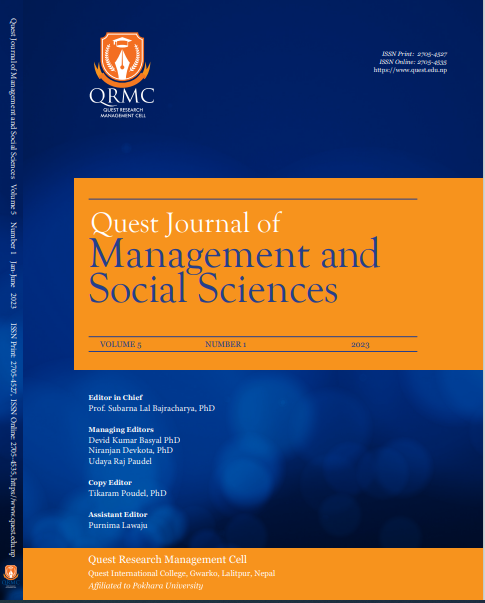Urbanization and Carbon Emission in South Asia
DOI:
https://doi.org/10.3126/qjmss.v5i1.56286Keywords:
Urbanization, Carbon Emission, Urbanization Kuznets’ CurveAbstract
Background: Rapid urbanization in South Asia has led to increased energy consumption, transportation, and construction of new infrastructure, resulting in high carbon emissions. South Asia is the world's fastest urbanizing region, and its carbon emissions are influenced by the building industry, which accounts for more than 30% of the region's energy-related carbon emissions. This issue poses a serious policy concern as South Asia is vulnerable to the impact of carbon emissions and climate change. The relationship between urbanization and carbon emissions in South Asia is the concern of this paper.
Objective: To analyze the relationship between urbanization and carbon emissions in South Asia and to test the validity of urbanization Kuznets' curve for the region.
Method: Modified version of the Influence, Population, Affluence, and Technology (IPAT) model framework is used to study the relationship between carbon emissions and urbanization in South Asia. The data spans from 1970-2019.
Results: The study finds a significant positive relationship between carbon emissions and urbanization, population, and population structure. The existence of Urbanization in Kuznets’ Curve for South Asia is proved.
Implication: The positive relationship between carbon emissions and urbanization poses a major policy challenge in South Asia. With increasing population and economic growth, sustainable urbanization must be a top priority for policymakers in order to mitigate the effects of climate change.
Downloads
Downloads
Published
How to Cite
Issue
Section
License
Copyright (c) 2023 Quest Journal of Management and Social Sciences

This work is licensed under a Creative Commons Attribution-NonCommercial-NoDerivatives 4.0 International License.
This license enables reusers to copy and distribute the material in any medium or format in unadapted form only, for noncommercial purposes only, and only so long as attribution is given to the creator.




